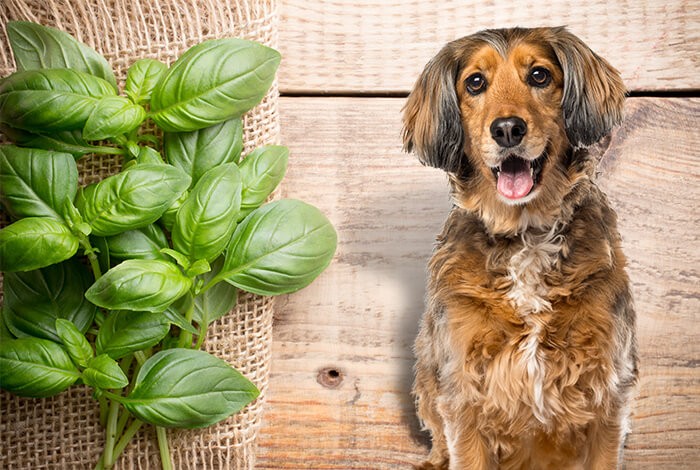![]() Reviewed By Joana Garrido DVM
Reviewed By Joana Garrido DVM
Basil has a sweet and aromatic taste that dogs might find enticing. However, can dogs eat basil? The simple answer is yes. This herb is believed to hold off the progression of aging and cognitive deterioration.
Basil also contains antioxidants and anti-inflammatory properties that help ward off other canine diseases, such as cancer.
Read on to know what types of basil are safe for dogs and what preventive measures can be taken to keep possible side effects of the herb from taking effect on your pooch.
Health Benefits of Basil for Dogs

Basil is a simple yet powerful herb with potent health benefits for pooches. Here are the top reasons why you should consider adding basil to your dog’s diet:
-
Prevents Cellular Damage
One of the health benefits of basil is it contains high levels of antioxidants that help destroy free radicals.
Minimizing their numbers prevents cell damage and promotes better immune system function.
-
Good for Cancer Prevention
The antioxidants of basil improve the disease resistance of your dog’s body. They are powerful enough to inhibit the development of certain types of cancer.
Antioxidants also combat health problems caused by aging, such as heart problems and senility.
-
Has Anti-Inflammatory Properties
Is basil good for dogs with arthritis? Yes, basil is good for arthritic dogs. This herb has anti-inflammatory properties, which keep the swelling of joints to a minimum.
For instance, the high levels of beta-caryophyllene found in basil bind with the body’s regulators of inflammation called CB2 receptors. In doing so, the pain and soreness caused by arthritis are reduced.
-
Regulates Mood
Another good reason why basil is good for your dog’s health is its calming effects. This herb is a natural remedy for anxiety and nervousness in pooches.
It will also save you money since basil is significantly cheaper than vet-prescribed medications.
Can Basil Be Bad for Dogs?
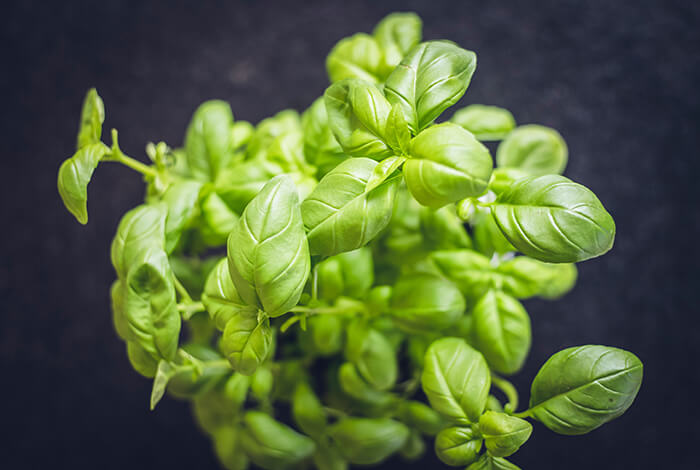 Basil is good for dogs, but it should be given in moderation, much like all human food.
Basil is good for dogs, but it should be given in moderation, much like all human food.
Heedlessly feeding your dog too much of the herb can cause unsavory side effects. Here are some of the side effects of basil on dogs:
Gastrointestinal Issues
Ingesting basil in excess can cause upset stomachs in dogs because it is highly fibrous. Vomiting and diarrhea may also take place.
Serving your dog this herb in small quantities will keep his digestive system unbothered.
Basil Allergy
Eating basil can trigger allergic reactions in some dogs. They may experience swelling, hives, itchiness, and diarrhea.
When feeding your dog basil for the first time, serve it in small amounts. Watch him closely for any signs of allergic reaction.
If your dog is allergic to basil, keep it out of his meals. Get him proper vet treatment too, since allergies can lead to severe breathing difficulties.
Is basil safe for dogs even though it may cause these side effects? Yes, basil is safe for dogs despite its few downsides. These minor problems can simply be averted by limiting the serving size of basil.
What Types of Basil Are Safe for Dogs to Eat?
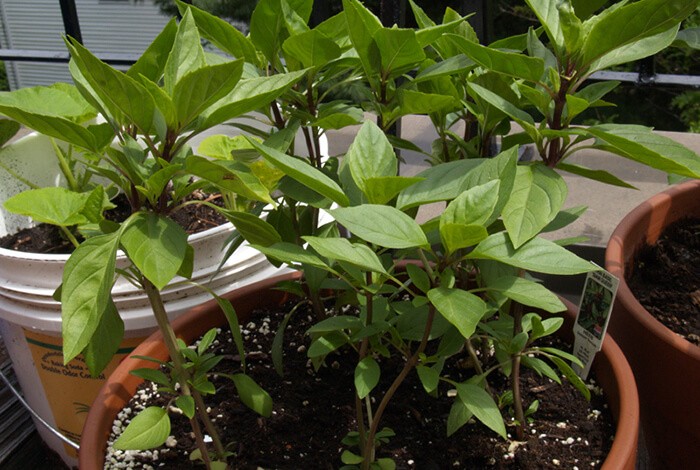
Different types of basil are sold in the market. They can also be cooked and prepared in many ways.
Which of these are healthy and safe for your furry companion? Read on to find out.
Can Dogs Eat Basil Leaves?
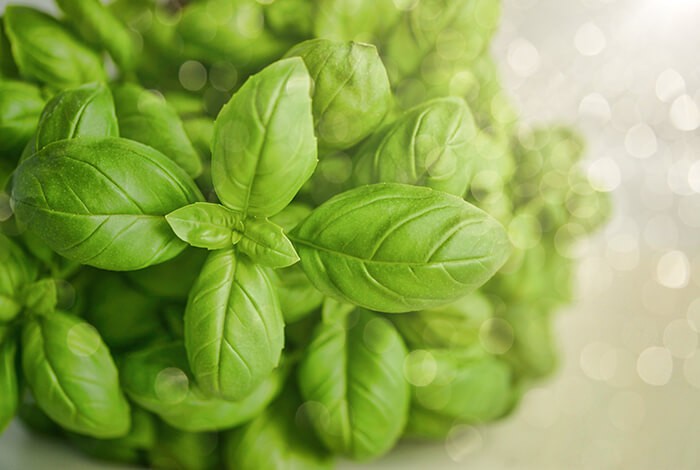
Yes, dogs can eat basil leaves since these are considered nontoxic to them. Choose organically grown fresh basil leaves since they are less exposed to pesticides and other chemicals.
Rinse the basil leaves with water before serving them to your pooch to get rid of grime and chemical residues.
Can Dogs Eat Basil Buds?
Yes, dogs can eat basil buds. They do not pose any toxic dangers to canines. The same goes for basil seeds. When preparing them for your furry pal, apply the same steps you do with basil leaves.
Can Dogs Eat Dried Basil?
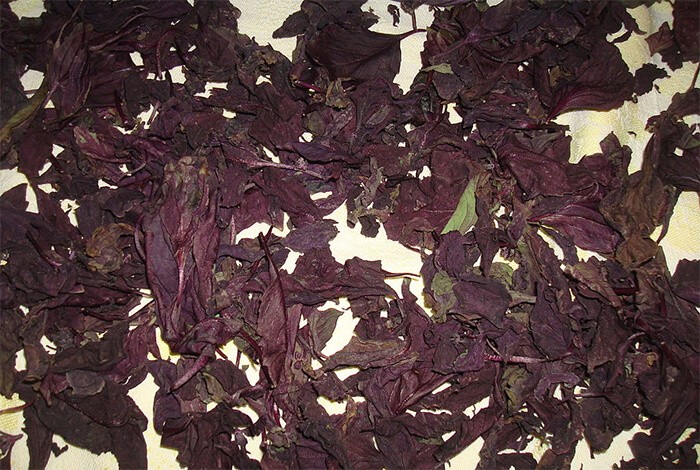
Yes, dried basil is safe for dogs too. There is not much difference between the health benefits of dried and fresh basil.
However, their taste is a bit distinct from each other. Dried basil tends to have a stronger flavor compared to fresh basil.
Can Dogs Eat Thai Basil?
Yes, dogs can eat Thai basil in small amounts. This type of basil has a sweeter flavor compared to regular basil, which has a peppery taste.
Can Dogs Eat Sweet Basil?
Yes, sweet basil is safe for your dog to eat. It also has a sweeter taste than the regular variety. Always keep in mind to avoid being excessively generous in feeding sweet basil to your dog.
All types of basil are safe for your dogs, including the most common varieties such as:
- Genovese basil
- Purple basil
- Holy basil
- Lettuce basil
- Green ruffles basil
- Cardinal basil
- Blue basil
- Greek basil
Can Dogs Have Cooked Basil?
Yes, dogs can have cooked basil, but avoid overcooking as excessive heat will deplete the nutrients in the herb and strengthen its bitter taste.
Another thing to keep in mind is to skip combining basil with dangerous ingredients such as large amounts of onions and garlic.
Can Dogs Have Basil Pesto?
No, it is a bad idea to feed dogs basil pesto. Creating this food involves combining various ingredients such as olive oil, parmesan cheese, and salt, along with different herbs and spices. These are too much for a dog’s stomach to handle.
Store-bought basil pesto is particularly dangerous. It often contains garlic, which is highly toxic to dogs.
Can Dogs Have Basil Essential Oil?
No, dogs cannot have basil essential oil orally or topically because it contains toxic phenylpropanes.
While it can be used in canine aromatherapy, avoid long exposures to minimize the risk of essential oil poisoning and other unwanted side effects.
Do not forget to dilute basil essential oil properly with a carrier oil for the same reason.
How Much Basil Can I Give My Dog?
Dogs will only need a small quantity of basil to take advantage of its health perks.
For small breeds, using up to a pinch of the herb is more than enough. Medium-size dogs can have no more than half a teaspoon of basil. On the other hand, larger dogs can have a little bit more. A teaspoon will do.
The frequency of offering basil to your dog also matters. Feeding it to him regularly may increase the risk of side effects.
Thus, it should only be given sparsely. Sprinkle fresh or dried basil on your dog’s food once a week.
How to Feed Basil to Your Dog
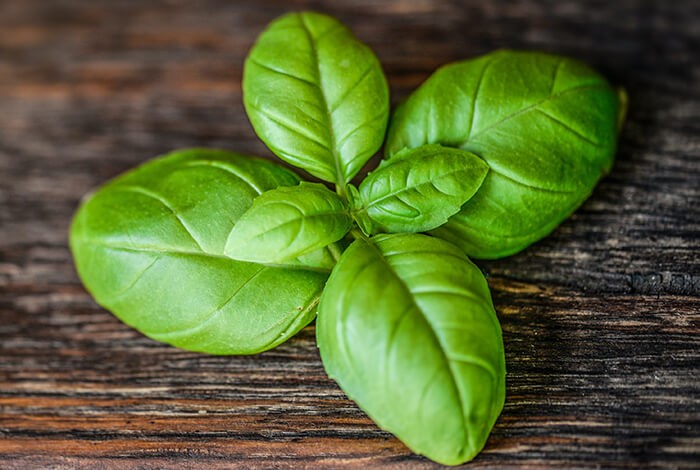
It is easy to incorporate basil into your furry pal’s meals. Just add either fresh or dried forms of the herb to his meals.
If you are using fresh basil leaves, remember to wash them with water and chop them into small pieces for easier consumption.
When introducing basil to your dog the first time, only offer it in small amounts. This will help him slowly get accustomed to the herb’s taste and prevent causing digestive issues.
Then you can gradually increase the quantity until it reaches the recommended serving for your dog’s size.
Homemade Basil Dog Treats
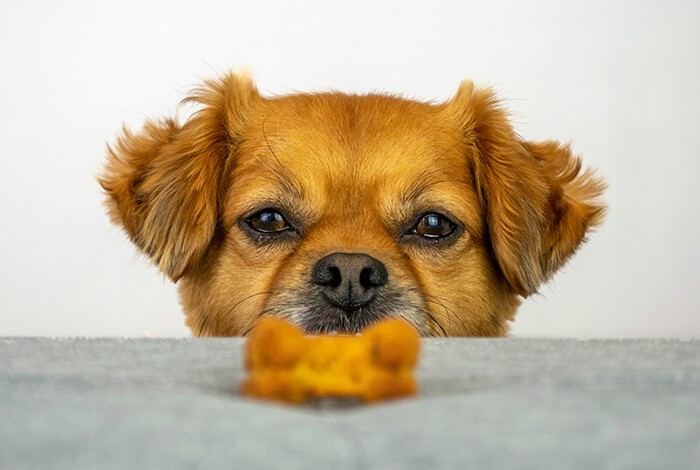
Surprise your dog with a delightful homemade basil dog treat by following this recipe:
 Basil Sweet Potato Biscuits
Basil Sweet Potato Biscuits
Ingredients
- 1 cup buckwheat flour
- ¾ cup wheat flour
- ⅓ cup organic coconut oil
- 1 tablespoon crushed basil
- 1 tablespoon local honey
- 1 finely chopped sweet potato
- 1 beaten egg
Procedure:
- Preheat the oven to 350 degrees.
- Grease the cookie sheets with coconut oil.
- In a large mixing bowl, combine all ingredients.
- Stir until you have a firm dough.
- Roll out the dough on a lightly floured surface. It should be around ½-inch thick.
- Cut out shapes from the dough using a cookie cutter.
- Transfer them to the greased cookie sheets.
- Bake for 30 to 35 minutes until golden brown.
- Let the basil sweet potato biscuits cool down completely before serving them to your dog.
FAQs About Basil for Dogs
Are Basil Leaves Poisonous to Dogs?
Technically, basil leaves are not poisonous to dogs. But exposure to certain chemicals such as pesticides and fertilizers can make them toxic.
As we have mentioned earlier, go for organically grown basil leaves since they are less exposed to harmful chemicals. During preparation, rinse fresh leaves thoroughly to remove any residues or dirt on the surface.
Can Dogs Eat Basil Stems?
Yes, dogs can eat basil stems since they are edible. However, to prevent choking and stomach obstruction, slice the stem into bite-size pieces.
Discard the bottom part of the stem because it tends to be tough to chew. It is advisable to cook basil stems before feeding them to your dog to soften them up.
Are Dogs Allergic to Basil Plants?
Yes, some dogs are allergic to basil plants, but it is a rare occurrence.
Canines with basil allergies might also experience allergic reactions if they ingested or are exposed to other plants belonging to the Lamiaceae family. These include hyssop, sage, mint, and lavender.
Does the Smell of Basil Bother Dogs?
The smell of basil may bother some dogs because it has a hint of pungency. If your dog finds the scent of this herb off-putting, mix it thoroughly in his food to mask its odor.
Summary
Basil is one of the few herbs that are nontoxic to dogs. Combining it with your furry pal’s meals gives him several health benefits such as boosting his immune system and preventing cancer.
As with any human food, feed basil to your canine companion in moderation to avoid unwanted side effects like gastrointestinal distress.
Before adding other herbs to your dog’s meals, check our Herbs and Spices section to know if they are safe for him.

